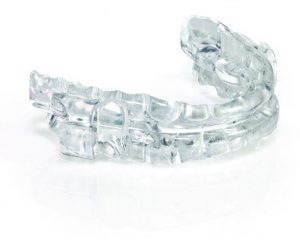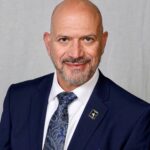Oral Appliance Therapy (OAT) for Obstructive Sleep Apnea (OSA) has been well established as a viable alternative to Continuous Positive Airway Pressure (CPAP) for lowering the Apnea Hypopnea Index (AHI). Recently the EFFECTS,1 study (Effectiveness and Efficiency of the ProSomnus [IA] Sleep Device for the Treatment of Obstructive Sleep Apnea) demonstrated that Mean Disease Alleviation (compliance and efficacy combined) was equal to or greater than CPAP therapy. Exciting news to be sure, yet physicians are still hesitant to cross the aisle to work with dentists on this health epidemic. One reason often cited is the untoward side effects that can complicate treatment outcomes with oral appliances. At the 2017 American Academy of Dental Sleep Medicine meeting, Tom Schell, DMD, and Rose Sheats, DMD, MPH, presented a Consensus Conference preliminary report on Appliance Side Effects. One of the undesirable outcomes was tooth movement.
The nature of flexible materials, unprotected or uncovered incisal edges and/or imprecise fit of oral appliances leaves teeth more able to move during therapy2. Although open contacts, slight posterior interferences and other minor movements are often well tolerated by patients, changes that affect esthetics are not. It would be preferable to minimize or even eliminate all unwanted tooth movement when treating an OSA patient. This study sought to determine if the new, precision milled devices, like the lingualess ProSomnus MicrO2 or [IA] with their rigid retainer-like fit would prevent or minimize such movement.

ProSomnus [IA] and MicrO2 Platform
For the study, Little’s Index3 and 3Shape Trios scans were used to perform an orthodontic analysis of where teeth were before and after treatment with a ProSomnus device for nine patients. Treatment times varied, with an average of 10 months and a range of 8 to 32 months. Scans were obtained from the before and after models and tooth position changes were as shown.

3Shape Trios Scan and Little’s Index Measurements
The digital overlays provided objective data. Across the nine subjects, the there were no visible or perceivable changes in tooth position. The global variation was less than +/- 0.75mm with a 95% Confidence level, P-values >0.1. This result was better than Norrhem’s2 rigid appliance measurements and the observations of Rose et al., Chen et al., and Pliska et al. who found changes of between −1 to −2 mm in the lower teeth during treatment4.
No statistically significant difference between Little’s Irregularity Index from the initial to the final models was observed. The precision milled, control-cured acrylic platform ProSomnus uses to design and manufacture their custom devices is superior to other cold-cured or flexible platforms in several ways. The denser material is less porous, easier to clean, stronger, and more precise; the close fit and stability likely is responsible for their retainer-like results. Like the fit and intended movement design for clear orthodontic aligners, the digital precision of the milled devices helps manage an unwanted side effect and may serve to allay a common perception of sleep physicians that tooth movement is inevitable.

Digital Overlay Showing No Statistical Changes

It is important to note that this result was accomplished using a lingualess appliance; the precision match to the buccal surfaces did not allow the unfettered tongue to move teeth, either. The ProSomnus [IA] and MicrO2 platforms are metal free and customizable to meet the doctor’s specifications, allowing for the highest level of precision dental medicine.

The future is bright. With milled and printed CAD CAM devices (Computer Aided Design and Computer Aided Manufacturing), intraoral scanning, smaller compliance sensor and other innovations on the horizon, oral appliance therapy will continue to improve. Dialogue with physicians, better compliance, treatment efficiencies, patient experience and effectiveness will drive payers to look at mandibular advancement as the first treatment option, even before CPAP. We are still challenged to model our protocols within the umbrella of medical care. The recent American Medical Association and American Academy of Sleep Medicine’s resolutions regarding the use of home sleep tests by dentists are not to be ignored. They speak to a deeper problem with what has traditionally been an anecdotal approach to care. By repeating and expanding studies like this one on side effects and sharing with medicine, we can strengthen the bond and gain a respected place in the health care paradigm for obstructive sleep apnea.





